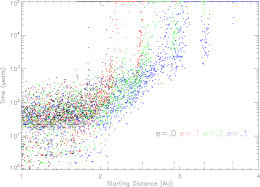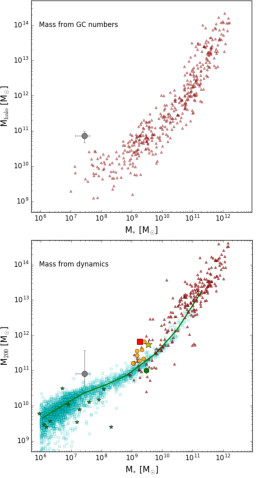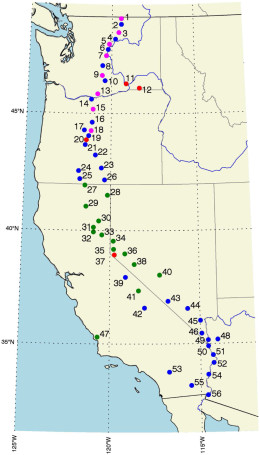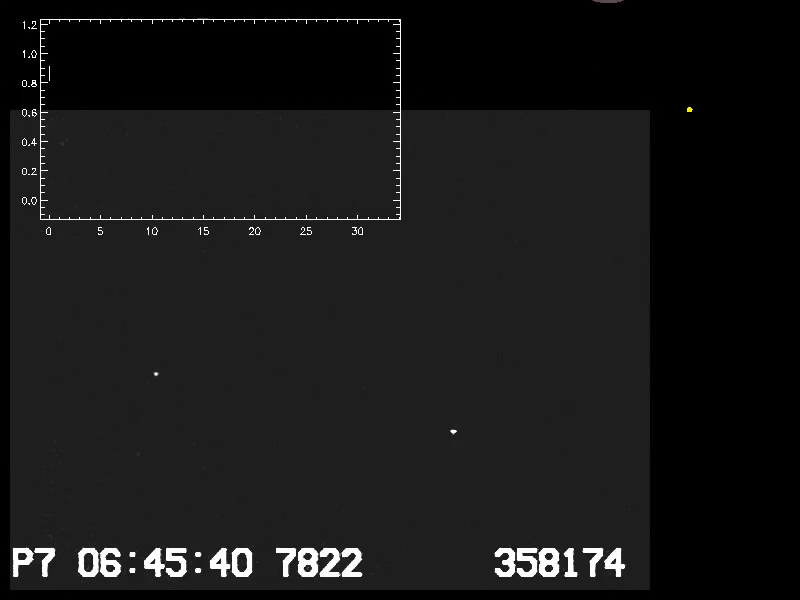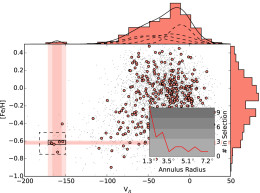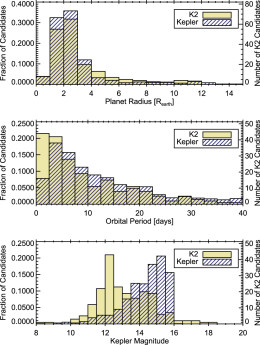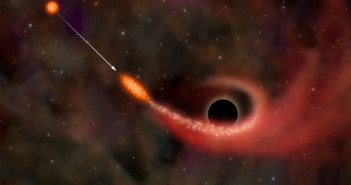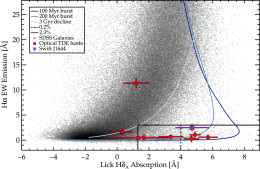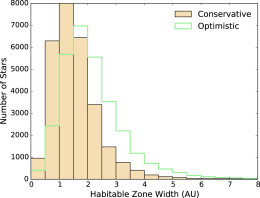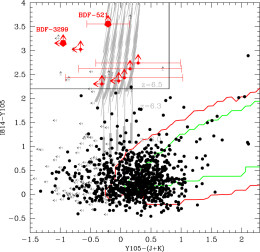
Where a Neutron Star’s Accretion Disk Ends
In X-ray binaries that consist of a neutron star and a companion star, gas funnels from the companion into an accretion disk surrounding the neutron star, spiraling around until it is eventually accreted. How do the powerful magnetic fields threading through the neutron star affect this accretion disk? Recent observations provide evidence that they may push the accretion disk away from the neutron star’s surface.
Truncated Disks
Theoretical models have indicated that neutron star accretion disks may not extend all the way in to the surface of a neutron star, but may instead be truncated at a distance. This prediction has been difficult to test observationally, however, due to the challenge of measuring the location of the inner disk edge in neutron-star X-ray binaries.
In a new study, however, a team of scientists led by Ashley King (Einstein Fellow at Stanford University) has managed to measure the location of the inner edge of the disk in Aquila X-1, a neutron-star X-ray binary located 17,000 light-years away.
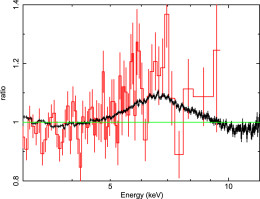
Iron line feature detected by Swift (red) and NuSTAR (black). The symmetry of the line is one of the indicators that the disk is located far from the neutron star; if the inner regions of the disk were close to the neutron star, severe relativistic effects would skew the line to be asymmetric. [King et al. 2016]
Measurements from Reflections
King and collaborators used observations made by NuSTAR and Swift/XRT — both X-ray space observatories — of Aquila X-1 during the peak of an X-ray outburst. By observing the reflection of Aquila X-1’s emission off of the inner regions of the accretion disk, the authors were able to estimate the location of the inner edge of the disk.
The authors find that this inner edge sits at ~15 gravitational radii. Since the neutron star’s surface is at ~5 gravitational radii, this means that the accretion disk is truncated far from the star’s surface. In spite of this truncation, material still manages to cross the gap and accrete onto the neutron star — as evidenced by X-ray flaring (almost certainly caused by accretion) that occurred during the authors’ observations.
Magnetic Effects
What could cause the truncation of the disk? The authors believe the most likely factor is pressure from the neutron star’s sizable magnetic field, pushing the inner edge of the disk out. They calculate that a field strength of roughly 5*108 Gauss (for comparison, a typical refrigerator magnet has a field strength of ~100 G!) would be necessary to hold the inner edge this far out. This is consistent with previous estimates for the field of the neutron star in Aquila X-1.
The authors point out that magnetic field lines could also explain how the neutron star is still accreting material despite the gap between it and its disk: gas could be channeled along field lines from the inner edge of the disk — which is roughly co-rotating with the neutron star — onto the neutron star poles.
The observations of Aquila X-1’s truncated disk are an important step toward confirming models of how neutron stars’ magnetic fields interact with their accretion disks in X-ray binaries.
Citation
Ashley L. King et al 2016 ApJ 819 L29. doi:10.3847/2041-8205/819/2/L29


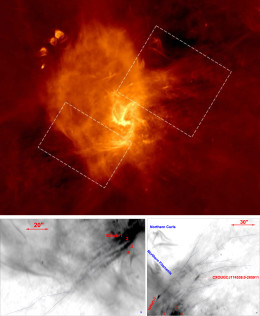
![Top: Superposition of the JVLA image of Sgr A (blue) and a molecular line image taken with the SMA (red) that shows Sgr A*’s circumnuclear disk. Bottom left: Molecular emission is shown in contours, and the Sigma Front is traced by blue lines. Bottom right: The authors’ geometrical model for the supernova explosion and resulting emission. [Adapted from Zhao et al. 2016]](https://aasnova.org/wp-content/uploads/2016/03/fig31-260x307.jpg)

